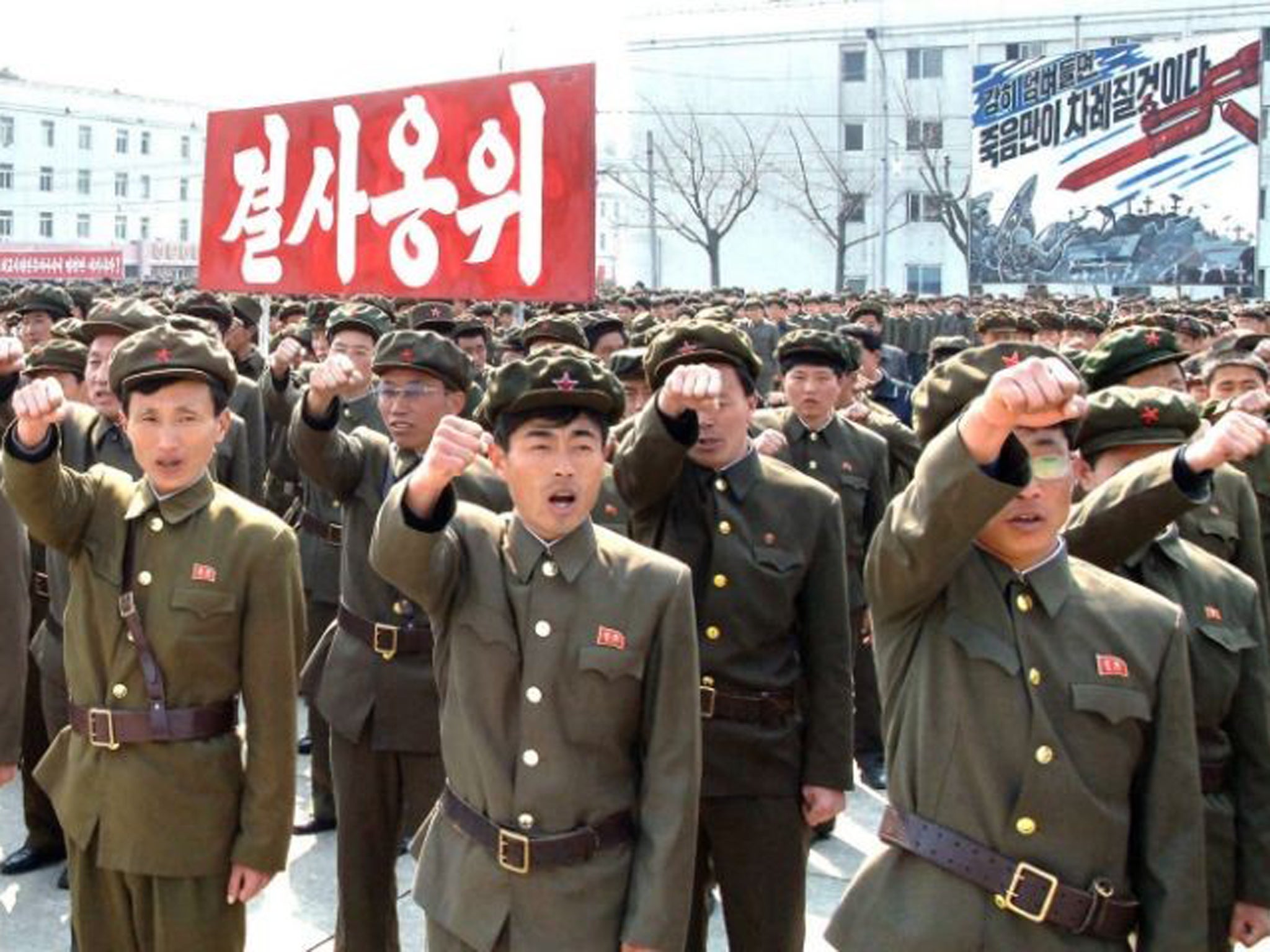North Korea approves nuclear strike on US
Pentagon deploys missile defence system in Pacific in response to ‘real and clear danger’

The Pentagon last night said that the US advanced ballistic missile defence system would be deployed in the Pacific in a direct response to increased threats from North Korea.
The Terminal High Altitude Area Defence System (Thaad) will be stationed on the Pacific island of Guam within weeks, in what appears to be a direct response to heightened rhetoric from North Korea last night.
Shortly before the Pentagon announcement, the North Korean Army said it had ratified a “merciless” attack against the US – potentially involving a “cutting-edge” nuclear strike.
“The moment of explosion is approaching fast,” warned the military in a statement on the state news agency KCNA. With war ready to break out “today or tomorrow,” Pyongyang said the US had “better ponder over the prevailing grave situation”.
US authorities claimed the deployment of the nuclear missile defence system would “strengthen our regional defence posture against the North Korean regional ballistic missile threat”.
Both developments came after North Korea yesterday barred South Korean workers from entering the Kaesong joint industrial zone, north of their demilitarised border. The move, which will only deepen tensions on the peninsula, came 24 hours after the North announced it was restarting the mothballed plutonium reactor at its Yongbyon facility, thereby signalling its intention to step up its nuclear weapons programme.
The interruption at Kaesong is seen by some experts as an especially ominous development, given that – with the exception of three days in 2009 – the complex had remained open through the string of previous crises since it opened in 2004 and is a rare enduring instance of co-operation between the two Koreas.
The closure “is something that was less expected, and is less directly in North Korea’s interests,” Patrick Cronin, a senior analyst with the Centre for a New American Security in Washington, said. “Is this a short-term demonstration of dissatisfaction with US-South Korean policy, or a portent of something more drastic at Kaesong?”
For the South, the world’s 15th largest economy, Kaesong is of relatively minor significance, producing annually some $470m worth of goods which are shipped back to South Korea and then exported. But for the North it is a precious source of hard currency and jobs – but one that for now at least seems in jeopardy.
The move is thus being generally seen as yet another act of brinkmanship in the North’s confrontation with South Korea and its protector, the US.
As Pyongyang has stepped up its provocations, so the US and North Korea have continued, more ostentatiously than ever, the military exercises that they conduct each spring.
After despatching nuclear-capable B-2 stealth bombers from their base in the US to take part, Washington has positioned a second missile-defence destroyer off the Korean peninsula – in reaction to Pyongyang’s recent threats to target US bases in South Korea, where 28,500 American troops are stationed, and in the Pacific.
“Let me be perfectly clear,” Secretary of State John Kerry said this week after talks with his South Korean counterpart Yun Byung-se, “the United States will defend and protect ourselves and our treaty ally, the Republic of Korea [South Korea].”
The Defence Secretary Chuck Hagel, went further yesterday, claiming North Korea’s actions represented a “real and clear danger” to the US and its allies.
Although Pyongyang’s current rhetoric is of a violence without precedent, some US analysts still believe the North is playing a familiar game – doing everything in its power to secure concessions from the West.
They would come both in the shape of economic assistance and diplomatically, in a resumption of the long-suspended six-nation talks over its nuclear programme.
So far though the US has given not the slightest public indication it is ready to go along.
Join our commenting forum
Join thought-provoking conversations, follow other Independent readers and see their replies
Comments